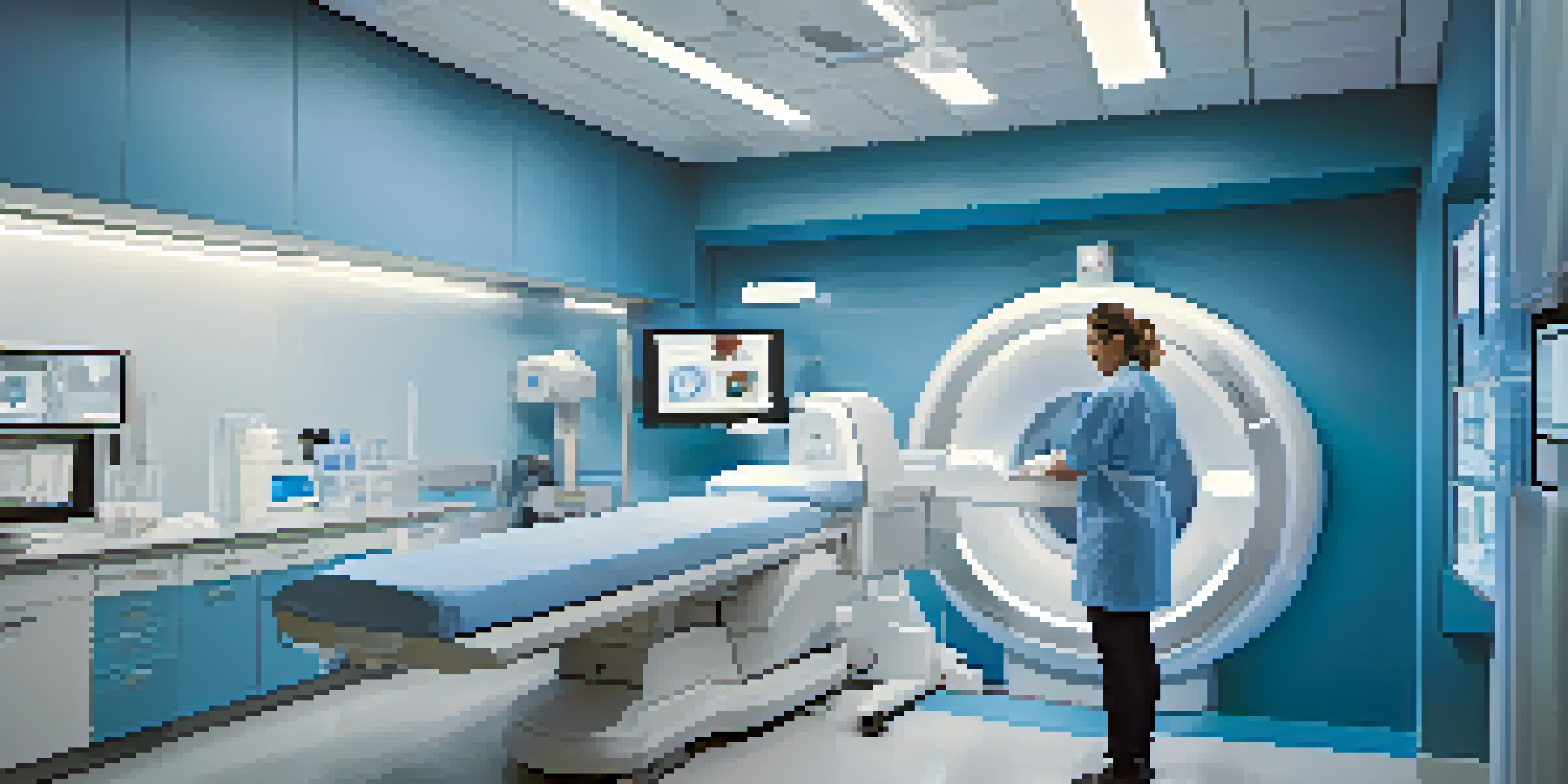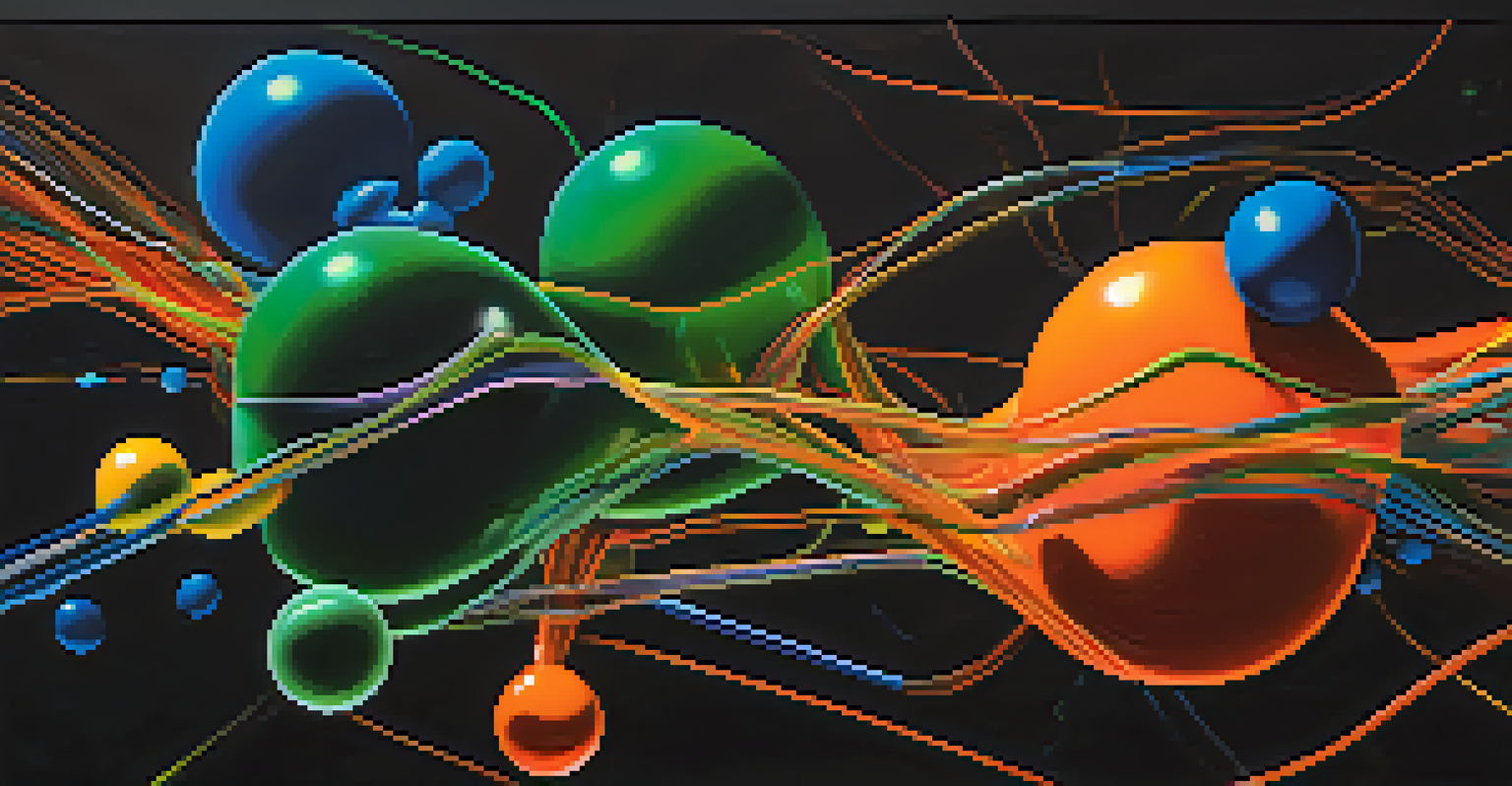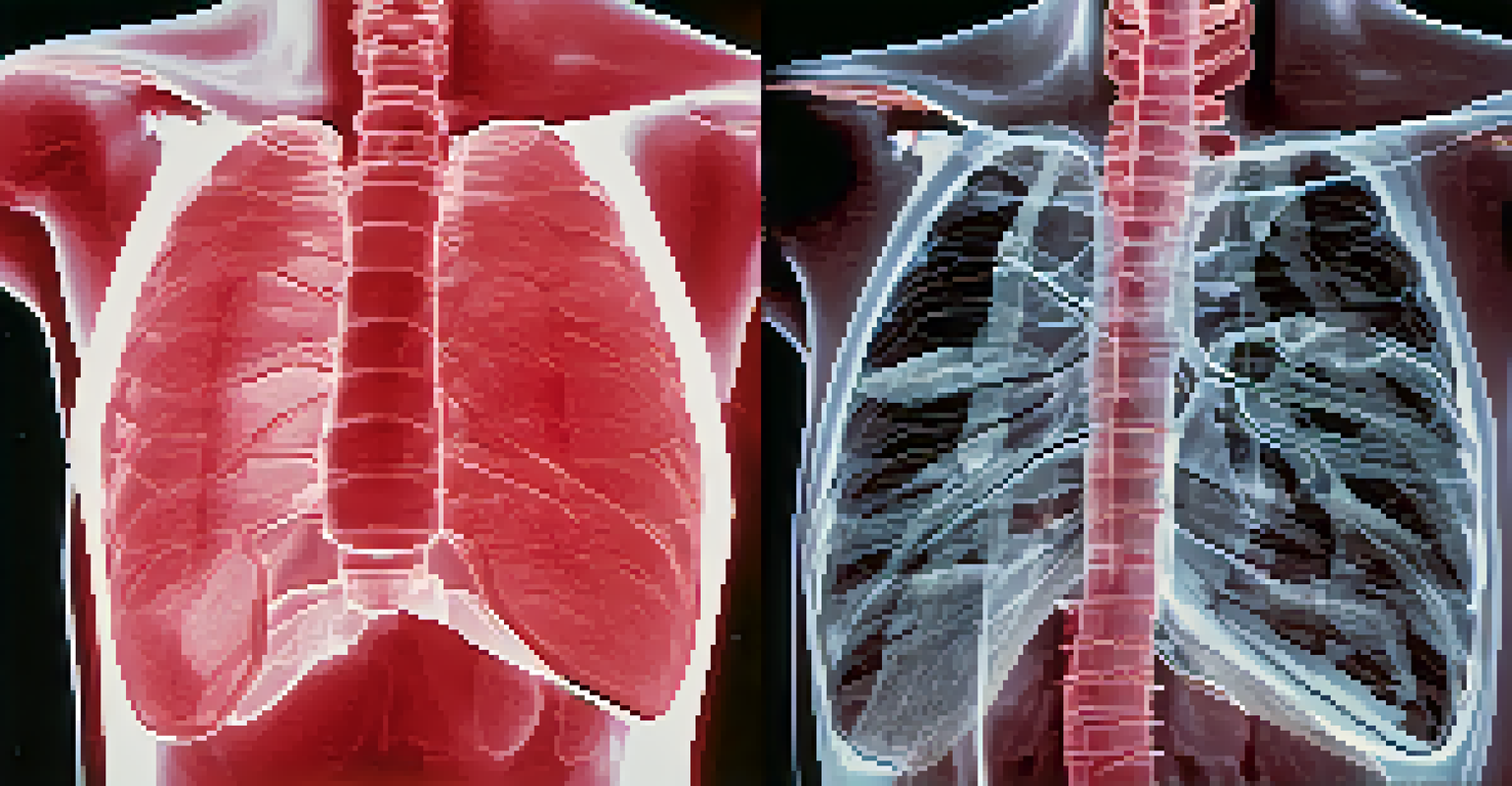The Role of Contrast Agents in Medical Imaging Procedures

What Are Contrast Agents and Their Importance?
Contrast agents are substances used in medical imaging to improve the visibility of structures within the body. They help highlight specific areas, making it easier for healthcare providers to diagnose conditions. By enhancing the contrast between different tissues, these agents play a crucial role in various imaging techniques, such as X-rays, MRIs, and CT scans.
Imaging without contrast is like a painting without color.
Imagine trying to find a dark object in a dimly lit room; without a flashlight, it would be nearly impossible. Similarly, contrast agents provide that needed 'light' in medical imaging, allowing doctors to see details that would otherwise be obscured. This clarity is essential for accurate assessments and effective treatment plans.
In summary, contrast agents serve as vital tools that enhance the effectiveness of medical imaging procedures. Their ability to distinguish between different types of tissues can significantly impact patient outcomes, underscoring their importance in modern medicine.
Types of Contrast Agents Used in Imaging
There are several types of contrast agents, each designed for specific imaging modalities. For instance, iodine-based agents are commonly used in X-rays and CT scans, while gadolinium-based agents are preferred for MRI procedures. Understanding the type of agent used is crucial for anticipating potential side effects and ensuring patient safety.

Think of these agents as different colors of paint; each serves a unique purpose in creating a vivid picture. Just like an artist selects specific colors to achieve the desired effect, healthcare professionals choose the appropriate contrast agent based on the imaging technique and the patient's needs. This selection process is pivotal for obtaining accurate diagnostic results.
Contrast Agents Enhance Medical Imaging
Contrast agents improve the visibility of internal structures, aiding healthcare providers in accurate diagnoses.
Ultimately, the choice of contrast agent hinges on various factors including the patient's medical history, the type of imaging being performed, and the specific information needed. By tailoring the imaging approach, healthcare providers can optimize the diagnostic process.
How Contrast Agents Work in Medical Imaging
Contrast agents work by altering the way imaging waves interact with different tissues. For example, iodine absorbs X-rays, making blood vessels and organs appear brighter on the resulting images. This contrast allows for clearer visualization of abnormalities such as tumors or blockages.
The art of medicine consists in amusing the patient while nature cures the disease.
To put it simply, think of contrast agents as a way to 'paint' a clearer picture of the body's internal structures. Just like a well-lit photograph reveals intricate details, these agents enhance the imaging process, allowing for better identification of health issues. This improved visibility ultimately aids in more accurate diagnoses.
In essence, the mechanism of action behind contrast agents is a blend of science and artistry. By carefully selecting and administering these agents, medical professionals can unveil the hidden complexities of the human body, leading to more effective medical interventions.
Safety Considerations for Contrast Agent Use
While contrast agents are generally safe, there are important safety considerations to keep in mind. Some patients may experience allergic reactions, particularly to iodine-based agents. Healthcare providers carefully assess each patient's medical history to mitigate potential risks before proceeding with imaging.
Imagine being in a crowded room; some people may feel uncomfortable due to allergies or sensitivities. Similarly, not every patient will respond the same way to contrast agents. Therefore, pre-screening is essential to ensure that the benefits outweigh any potential risks.
Different Types for Specific Uses
Iodine-based and gadolinium-based agents are tailored for X-rays, CT scans, and MRIs, ensuring optimal imaging results.
Furthermore, advancements in medical imaging technology have led to the development of safer contrast agents and protocols. Continuous monitoring of patients during and after procedures can help identify any adverse reactions promptly, ensuring a safer imaging experience.
Preparing Patients for Contrast-Enhanced Imaging
Preparation is key when it comes to contrast-enhanced imaging procedures. Patients may be advised to fast for a certain period or avoid specific medications prior to receiving a contrast agent. This preparation helps minimize risks and ensures the most accurate imaging results.
Think of it like preparing for a big event; the more organized you are, the better the outcome. By following pre-imaging instructions, patients can help healthcare providers obtain clearer images and avoid complications. Communication between patients and medical staff is crucial during this process.
In addition, educating patients about what to expect during the procedure can alleviate anxiety and foster cooperation. By providing clear guidelines and addressing any concerns, healthcare professionals can create a more comfortable environment for patients undergoing contrast-enhanced imaging.
The Role of Contrast Agents in Specific Imaging Techniques
Different imaging techniques utilize contrast agents in unique ways to enhance diagnostic capabilities. For instance, in CT scans, contrast agents highlight vascular structures, while in MRIs, they help visualize soft tissues and organs. Each method takes advantage of the properties of the contrast agent to provide critical insights into a patient's health.
Consider it like cooking; each recipe calls for specific ingredients that bring out unique flavors. Just as a chef expertly combines flavors to create a delicious dish, radiologists select the right contrast agent for the imaging technique to achieve the best possible results. This careful selection process is vital for accurate diagnoses.
Safety and Preparation are Key
Patient safety is paramount, requiring careful pre-screening and preparation to minimize risks during contrast-enhanced imaging.
Overall, understanding how contrast agents function within various imaging modalities can help healthcare providers maximize their effectiveness. By leveraging these agents appropriately, they can uncover vital information that may lead to life-saving diagnoses.
Future Trends in Contrast Agent Development
The field of medical imaging is continuously evolving, with ongoing research focused on developing new and improved contrast agents. Innovations aim to enhance safety, effectiveness, and patient experience. For example, researchers are exploring agents that minimize allergic reactions while providing superior imaging quality.
Imagine the possibilities; just as technology has transformed our daily lives, advancements in contrast agent development hold the potential to revolutionize medical diagnostics. These innovations could lead to more precise imaging techniques and better patient outcomes. The future of medical imaging looks promising.

As researchers continue to push boundaries, the goal remains clear: to improve patient care through enhanced imaging technologies. By fostering collaboration between scientists, healthcare professionals, and regulatory bodies, we can pave the way for groundbreaking developments in the role of contrast agents in medical imaging.